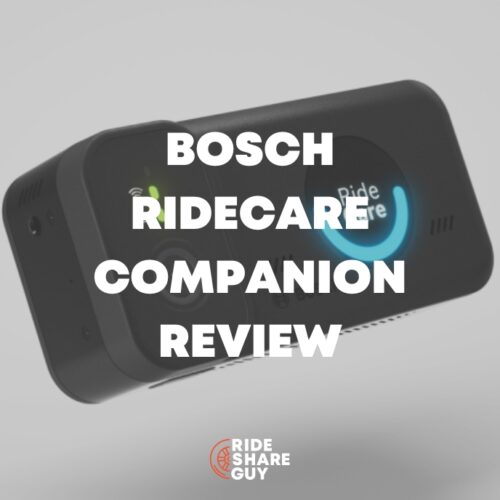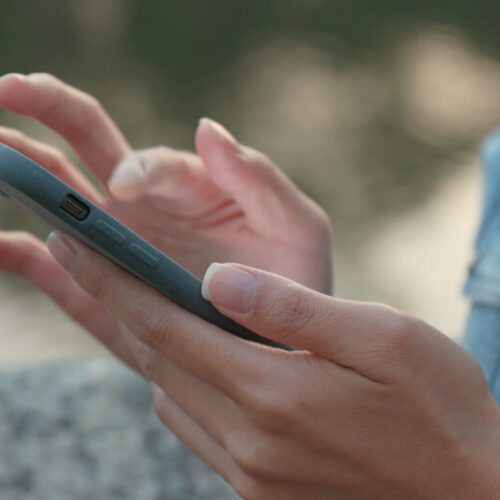Just having one of the best dash cams for Uber drivers visible in your car can be a big help for keeping your passengers in line.
Involved in an accident? A dash camera can prove that you were not at fault, potentially saving you thousands of dollars on repairs, fines, or injury claims – whether you’re doing a trip or not.
Attacked while driving? Dash cam evidence could provide the basis for a lawsuit.
Falsely accused of harassment? Dash cams can vouch for your innocence.
6 Best Dash Cams for Uber & Lyft Drivers in 2024
Here are our top picks at varying price points for the best dash cams for Uber drivers:
Cloud Dash Cameras
The main benefit of a cloud dash cam is exactly what you’d expect: your video is constantly being uploaded to the cloud.
This is ideal if you are ever (god forbid) carjacked or your dash cam is damaged. The peace of mind of knowing that your footage is always protected and available is an added layer of security.
Cloud cameras also have parking modes that can monitor your car 24/7. If there is an incident with your car while it is parked you can receive notifications via an app that is used in tandem with your cloud dash cam and take any necessary action immediately.
Now, the main thing to keep in mind is there can be recurring costs with cloud dash cams to use cloud services. Monthly plans are typically around $20 a month.
1. DisplayRide
The DisplayRide solution is described as the Rideshare Monitoring Platform.
It is essentially a compact dual dash cam with a multi-media display, and internal and external-facing cameras. It offers night recording using an InfraRed camera, providing clear visibility even in low-light conditions. Additionally, it can record audio inside the cabin, which can be disabled as per jurisdiction regulations.
The footage is automatically uploaded & stored on a secure cloud in real-time, wirelessly, and available to view on demand via the user portal, which is accessible from the touch-sensitive screen. In cases of emergency, recording from the previous 10 minutes is also made available immediately on the driver’s phone via a button on the touchscreen.
It also plays a periodic message to inform passengers that the ride is being recorded for their safety and serves as a deterrent for bad behavior.
The solution also provides a deactivation support system, which provides previous 7 days of recordings and also the ability to get free legal consultation. In case of an accident, an alert is sent automatically to an emergency contact, along with a link to live stream inside the vehicle,
The setup process is very straightforward and can be completed within just one minute, and without the need to download any additional apps. You can subscribe by paying a monthly subscription fee of $25. Subscription information is here.
This is a great solution for those that want the most secure rideshare driving experience possible, economically.
2. Owlcam
The Owlcam Classic 5.0 dual-facing dash cam with a 2.4-inch touch display. It is an all-in-one AI-powered personal vehicle security system providing anti-theft alerts and notifications.
When an impact or broken glass is detected, the vehicle security system instantly sends a video alert to your phone.
It comes with unlimited 4G LTE, secure cloud storage as well as 128GB onboard storage, and footage that can be accessed via the Owlcam App.
The cost is $229 for the unit and you can pay $14.95 monthly or $179.40 annually for their cloud service.
Related:
3. BlackVue
The BlackVue DR750-2CH LTE comes with both interior and exterior cameras housed on separate units, connected via a cable. Like the Owlcam, it comes with 24/7 monitoring capability, but it is an add on. Footage is accessed via the BlackVue App.
The price for the unit is $449 for the 32GB model, but the purchase comes with free access to their cloud services so you won’t have any monthly fee. A SIM card is not included.
Related:
4. VanTrue N4
In our opinion, this is the best dash cam for Uber and Lyft drivers that is not a cloud dash cam. It has so many of the features that we want in a dash camera.
The Vantrue N4 actually has three cameras built into it:
- Interior camera
- Front-facing camera
- Rear-facing camera
All three cameras can record at the same time with full HD video! The front-facing can record as crisp as 1140 hp.
The 2.45 LCD screen allows drivers to make easy changes to the camera’s settings.
Audio recording can be turned off and on by pressing a feature on the camera. This camera is currently available on Amazon for $259.
5. VanTrue N2 Pro
The VanTrue N2 Pro is a dual camera that has video recording in both directions — out your windshield and in your vehicle.
As of writing this article, it is available on Amazon for $199.
It supports 1080p on both cameras for a great, clear picture. The viewing image is wide enough to see the whole interior of a vehicle, so you can capture everything that is happening.
What’s really awesome is it automatically goes to night mode when it’s dark out, so you don’t have to fiddle with any controls or settings when the sun goes down or when bad weather makes the interior of your car darker.
The suction cup mount allows you to place the camera wherever you think it will best suit you and keep it out of your view. You’re even able to plug the power source into the mount instead of the camera, so the cord stays out of your way.
The VanTrue N2 Pro automatically turns on when you start your car and turns off (after a small delay) once you turn off your car. It also features loop filming so older footage gets erased to make room for new footage.
If it detects what it considers to be an excessive G-Force event, it moves the current recording to an EVENT folder and locks it. This is supposed to be just in the instance of a car accident. That way the event is easier to find and doesn’t get deleted with new footage until less than 30% of the recording space is left in storage.
6. Blueskysea B2W
The Blueskysea B2W features a dual camera so it will record what’s happening through your windshield as well as inside your vehicle. Both cameras record at 1080p and has a 2-inch LCD display.
It also features cabin illumination for nighttime, using infrared lights so the driver is not distracted by the light, and mounts via an adhesive pad or suction cup for your choice. It even comes with a pry tool to help you hide away the cable so it’s out of sight and out of your way.
Amazon currently has it listed for $129.99. For this price point, we’d say this is one of the best dash cams for Uber and Lyft drivers for that price.
One thing that stands out for this against the VanTrue N2 Pro is that this comes with the SD card so you don’t have to make that extra purchase — you can use it straight out of the box. However, it is compatible with up to a 400GB micro SD card so you can record up to approximately 30 hours before the memory is full.
Similar to the VanTrue, the Blueskysea B2W features loop recording to ensure the camera never stops recording, and a G-sensor and large “lock” button ensures important video clips do not get overwritten. Each camera turns 110º so you can find the right view to suit your interior and exterior shot needs.
Shop all Dash Cams for Sale on Amazon
Why Do Uber Drivers Need a Dash Cam?
Having video evidence available can be of crucial importance during any number of situations you’re likely to encounter as an Uber or Lyft driver, both in your car and on the road.
1. Car Accident Footage
Let’s say you’re in a car accident and it wasn’t your fault, but it’s your word against the other guy. Dash cams provide solid evidence of what happened.
It would help you make your case if you know the other guy was at fault. That proof could be enough that you won’t have to pay for the damages or your deductible.
That alone can justify the payment for the dashcam right there. Having that film can help your case tremendously and even offers an added accountability factor for passengers too.
2. Unruly Passenger
What about an instance where a passenger is being unruly — whether it be verbally or physically?
A dashcam will show the police exactly what happened and act as an impartial witness.
Sometimes just having a dashcam that the rider knows about is enough to stop them from doing something they’ll regret later. If they were smart, they wouldn’t even think twice about trying something because of a dashcam.
Here is a video of a passenger who attempts to take hold of the steering wheel while the driver was en route to a destination:
3. Sexual Assault Claims
Another unfortunate side effect of rideshare driving is sexual assault claims or instances of sexual assault or harassment.
Without a dashcam, it’s doubtful the platform would side with the driver if a woman said she was assaulted by their driver. The camera protects the driver and the passenger.
If anything were ever questioned, the recording would be all the proof needed to show what really happened. So this can help a driver keep their job or a passengers story become a reality.
It can make both parties feel more comfortable.
4. Refusing Underage Riders
Finally, a dashcam comes in handy if you refuse service to an underage teen or kid and Uber or Lyft try to deactivate you because the passenger called it discrimination.
With dash cam footage, you’d be able to show that you checked their legal age before refusing service in accordance with their terms of service.
This can provide the proof you need that you did look at their ID and confirm that they are too young to use the service.
Basically, a dash camera is an add-on to your insurance policy. It protects you as well as your passengers. Dashcams can help provide a nice sense of security, especially for night drivers.
That’s why we’ve made this list of the best dash cam for Uber drivers to make it easy for you to decide which one to buy.
Related:
Frequently Asked Questions
Will you get lower ratings if you have a dash camera?
You may be worried that having a dash cam will automatically get you lower ratings on the Uber or Lyft apps.
- Is it setting the wrong tone for your passengers?
- Will they rate you poorly for recording them?
Well, generally speaking, passengers will not ding your rating due to a dash cam. Your passengers will notice it and some will ask you about it.
We recommend that you try to make a light-hearted remark along with emphasizing their safety as well as yours. Most passengers will understand the reason you have it.
Don’t make the mistake of saying you post the videos on Reddit or Instagram or Facebook (and, by the way, don’t do it either).
Passengers might not take that very well and might lower your rating because of it. Just assure them that it’s only in case of accidents or make sure everyone is safe throughout your drive.
Most will be understanding, and they’ll appreciate that you care for their safety.
Are dash cams allowed in Uber and Lyft vehicles?
Many people wonder if dash cams are allowed by Uber, Lyft, and the law. I’m no lawyer, but I can tell you that neither Uber nor Lyft have policies forbidding the use of a dash cam. As for the passengers, 99% seem to appreciate that I’m taking their safety seriously by using a camera; that is if they even notice it’s there!
Are dash cams legal?
Laws vary by location; keep in mind that I’m not allowed to give legal advice. However, I can share the results of my research. The following 11 US states have what’s known as a “two-party recording law”:
- California
- Connecticut
- Delaware
- Florida
- Hawaii
- Illinois
- Kansas
- Maryland
- Massachusetts
- Michigan
- Montana
- Nevada
- New Hampshire
- Pennsylvania
- Utah
- Washington
The two-party recording law was implemented to prevent wiretapping. Specifically, it requires that all persons consent when someone is recording audio.
If you live in one of these states, it’s easy to comply with these laws: all you need to do is place a warning sticker on your windows (you can find a wide variety on Amazon) or turn off the microphone on your dash cam so that no conversation is recorded.
Even if you don’t live in a two-party state, warning stickers might not be a bad idea anyway. Better to invest in a few $5 stickers than to have your evidence thrown out of court, should you need to take it there.
Another legal matter to check your state laws on is whether or not you can mount something on your windshield. Several states have laws that do not allow you to mount anything to your windshield, but instead, you can mount it to your dashboard. Be sure to check your state law before mounting your dash camera.
Uber says drivers can install dash cams or other recording devices to help fulfill transportation service but can’t broadcast customers, images, audio, or video recordings. This would be a violation of Uber’s terms and can result in losing account access.
Should You Get a Dash Cam?
Ultimately, yes you should! I recommend every rideshare driver to find the best dash cam for Uber and Lyft that has the features you care about the most.
I’d highly recommend getting a dual camera that takes video both inside and outside of your car.
Have more assurance that you’re covered when an incident happens with the help of a dash cam. It’s an impartial witness to everything that happens throughout your busy, hectic, crazy rideshare-filled day.
Although many of the dashcams available today could use improvement on the little things like button layout and cable management systems, they perform their essential functions reliably and effortlessly.
Having one in my car has definitely improved my sense of security while driving.
Disclaimer
Before you install your dashcam, make sure you’re following all applicable laws.
Compliance is often as simple as posting a small warning (here are some stickers on Amazon) in your windows stating that the vehicle is equipped with video recording equipment – although in some states, even that may not be necessary.
Especially with Uber Pool in many cities, the vast majority of your passengers will appreciate that you are being proactive about ensuring their security as well as your own; just ensure that you won’t be breaking any of your local laws by doing so.




